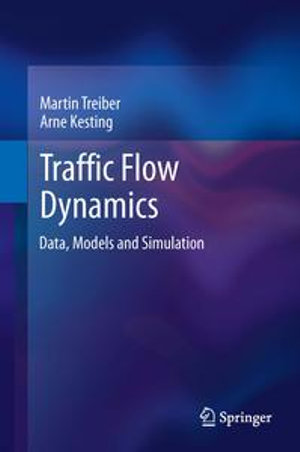
eTEXT
Traffic Flow Dynamics
Data, Models and Simulation
By: Martin Treiber, Arne Kesting
eText | 10 October 2012
At a Glance
eText
$89.00
or
Instant online reading in your Booktopia eTextbook Library *
Read online on
Desktop
Tablet
Mobile
Not downloadable to your eReader or an app
Why choose an eTextbook?
Instant Access *
Purchase and read your book immediately
Read Aloud
Listen and follow along as Bookshelf reads to you
Study Tools
Built-in study tools like highlights and more
* eTextbooks are not downloadable to your eReader or an app and can be accessed via web browsers only. You must be connected to the internet and have no technical issues with your device or browser that could prevent the eTextbook from operating.
ISBN: 9783642324604
ISBN-10: 3642324606
Published: 10th October 2012
Format: ePUB
Language: English
Publisher: Springer Nature
You Can Find This eBook In
This product is categorised by
- Non-FictionSciencePhysicsStatistical Physics
- Non-FictionEngineering & TechnologyTechnology in GeneralEngineering in General
- Non-FictionBusiness & ManagementOperational Research
- Non-FictionMathematicsApplied MathematicsMathematical Modelling
- Non-FictionReference, Information & Interdisciplinary SubjectsResearch & InformationInformation theoryCybernetics & Systems Theory
- Non-FictionLibrary & Info Sciences
- Non-FictionMathematicsOptimisation
- Non-FictionBusiness & ManagementManagement & Management TechniquesManagement Decision Making























